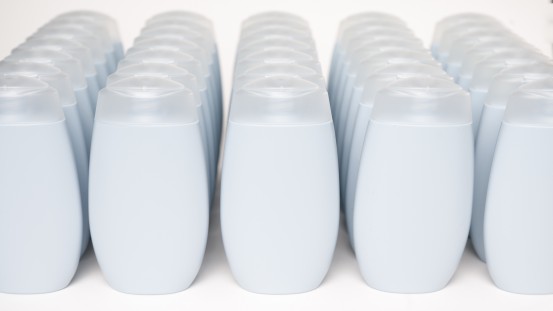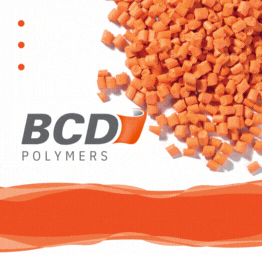Used shampoo and shower gel bottles have been almost entirely reprocessed without any loss of quality in a water-saving process at the Pla.to technical facility in Görlitz. The rHDPE granulate obtained from bimodal high-density polyethylene was completely reintroduced into the production cycle, producing new detergent bottles solely from recycled granulate, that meet the quality standards of new products.
With this, Pla.to offers the technology for a closed HDPE cycle – without the addition of virgin granulate necessary in other processes. “Our solution is a sustainable and water-saving method to fully recycle HDPE in large quantities”, explains Pla.to Managing Director Heinz R. Schnettler.
Plastic for the Cosmetic Industry with High Stability
HDPE is very suitable for numerous applications due to its high stability and tensile strength. In the detergent industry, bottles are typically manufactured by extrusion blow molding and have a label attached. The cap is usually made of polypropylene (PP).
Efficient Recycling with Minimal Wastewater
In its in-house demonstration center, Pla.to has reprocessed the used bottles using its own equipment. Before recycling, they are first sorted by color with the caps and crushed using a granulator. A dry cleaner then removes residual ingredients inside the bottles without any wastewater. Stubborn contaminants are first soaked and then removed from the plastic using friction and hot water. The label adhesive is then removed and the material is mechanically and thermally dried. Finally, the air stream of the zig-zag separator separates the bottles and caps from labels particles according to their bulk density. In order to separate the HDPE from the other components for reuse at the end, the polypropylene is separated using near-infrared spectroscopy (NIR). After compounding, it is regranulated into rHDPE and can be directly reused to produce new bottles.
Just Like HDPE Bottles Made from Virgin Material
In the project, Pla.to was able to produce 20,000 bottles through this method for recycling rHDPE. These bottles have passed all the necessary tests: They are dimensionally accurate, stable, odorless and have no imperfections such as specks or inclusions. Just like containers made from virgin material, they can be labeled and close tightly with a newly applied PP cap.“This proves that HDPE can be fully, efficiently and sustainably recycled with low wastewater on an industrial scale,” emphasizes Managing Director Heinz R. Schnettler.



